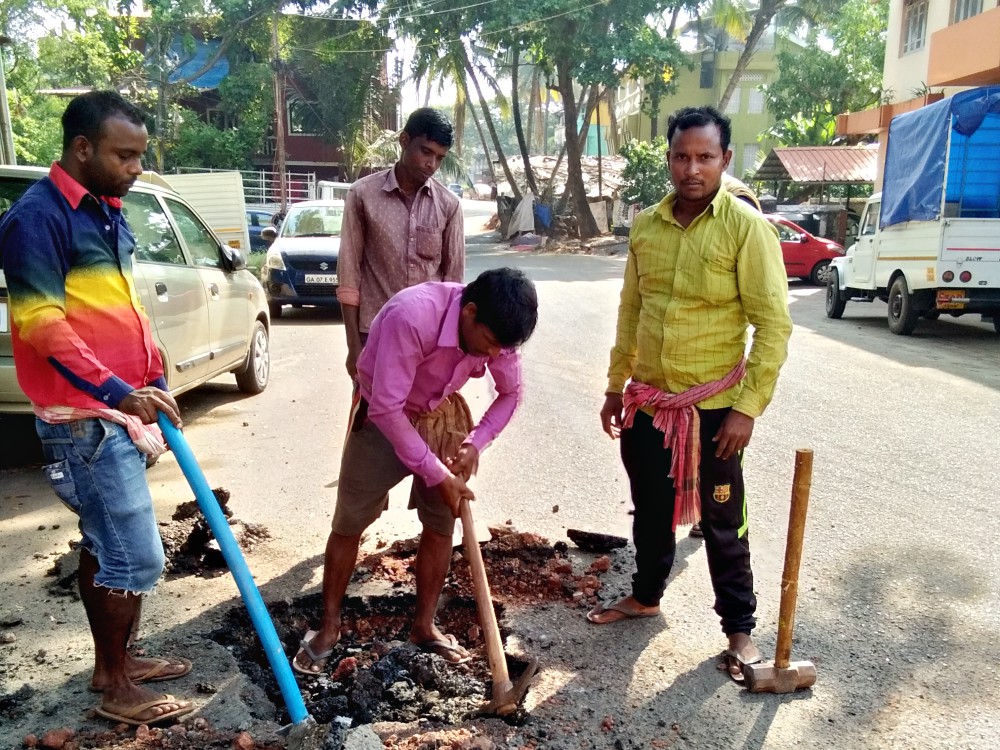Goa is abuzz with excitement as vintage bike and car owners, users, collectors and fans are decking […]

MIGRANTS TAKEOVER GOA TOWNS!
June 24- June 30 2023 June 23, 2023CITY: Goa is now becoming an urban city with 75% of the population staying in urban areas out of a 15.7 lakh population
By Rajan Narayan
However, 75% of the population of Goan stay in urban areas. A majority are aam aadmi migrants. In contrast, the villages are being deserted with a population of only three lakh either shifting to urban areas or migrating abroad…..
THE population of Goa according to the latest national census has risen to 15.7 lakh. The majority of the 15 lakh plus population or 75% is concentrated in the urban areas. Urban Goa both big and small has witnessed a major expansion over the last decades. The promotion of tourism has created employment opportunities although we are not sure if this is more for Goans or more for the migrating into Goa people.
Panaji is an interesting example of the number of malls, shops and restaurants shooting up. The old serene Mala area and heritage district of Latin Quarters Fontainhas was a tranquil heaven at one time but today its promotion as a tourist destination sees it bustling with restaurants, cafeterias, boutiques of all kinds selling objet d’art to fashion clothes and ethnic jewellery, also fresh organic produce from outside Goa and in Goa, there are niche homestays here and much more. The Fontainhas is booming with life and commerce.
All kinds of tours have come up including walking tours to see monuments, trees, churches, temples, heritage buildings, etcetera. Tourists young and old are walking Panaji, the Campal precinct, Campal promenade, the gardens, and visiting eateries which serve traditional Goan fish thali. The city of Panaji itself which was limited to Miramar has now expanded all the way past Dona Paula circle and on to where the Goa Medical College & Hospital is sited. The Caranzalem-Taleigao area is packed with shops, cold storage and lose weight diet clinics.
GOA IS BEST PLACE
IN all these migrants from the country over have discovered that Goa is the best place to get a rewarding job, one they are not likely to get in their own hometown or state for decent money. Even a fresher entering Goa can get a job as a security guard for a commercial establishment, watchman, errand boy, home delivery boys, etc. They earn anything from Rs10,000 to Rs15,000 and more.
There is always a desperate shortage for home maids. And it is here migrating young men with their wives do well, while he may work as a watchman, she works in half-a-dozen homes and earns Rs20,000 plus, plus. It makes sense to come with your wife and other women’s family members to Goa. It becomes a joint family migrant income of Rs20,000 plus for each member and all squash themselves in hole-in-the-wall accommodation premises for which they pay Rs5,000 or more – a place to use for cooking in a corner and sleeping it off at night in the same room. Goan landlords and landladies are only too happy to rent off their unused corners in their homes to migrants and make water and electricity available to them. It’s a story of get up early, cook their meals for the day, go to work the rest of the day and get home in the evening or late at night to eat, sleep and dream of a better future in Goa one day.
PORVORIM LIKE PANAJI NOW!
PORVORIM has become almost an extension of Panaji. Mall de Goa, Croma, Reliance, Magsons, restaurant chains and more are now to be found in Porvorim. You don’t have to come all the way to shop for household goods or other shopping as once upon a time. Once upon a time there was only O’Coqueiro with it telephone service, now there’re a host of upmarket restaurants offering Goan, Continental and all kinds of other cuisines, as well as pizzerias and patisseries. Construction activity goes on full swing ahead in a Porvorim which is opening up to attract more migrants.
All the former towns of Mapusa, Margao, Vasco and Ponda, have expanded rapidly to major townships and on their way to being mini-cities. All kinds of new businesses are doing brisk business like laundries and even sugarcane juice wallahs. These businesses make up for the closure of mining and its employment. The cities are extending into the highway areas in Mapusa where construction has extended to the Bodgeshwar temple. Coaching classes have come up to meet the requirements of those who aspire to appear for the IIT and medical entrance exam. Even Valpoi which was a small village has become a mega city.
Historically, the main shopping areas besides the 18 June road in Panaji, were the Aguada, Candolim, Calangute, Baga stretch and this now stretches to Anjuna and beyond. Once sleep village Assagao is buzzing with urban businesses and has also become an envied place to retire in an old Goan villa made over to be a wellness store retailing all the incense sticks, decorative candles and other meditation and yoga paraphernalia. Assagoa has also seen a farmhouse boom and plenty of villas with swimming pools offering home stays for the weekend or for long stays.
The wealthy in Mumbai and Delhi and Bengaluru rent entire bungalows for the season or all the year around – and these are places for holidays for their business staff, family members with seniors to give them a break by the beachside. These villas or bungalows come with housekeeping and kitchen staff attached and there’s a car at their service whenever desired. The educated rich will drive their own rental cars and find this more convenient for there is always GPS to guide you anywhere in Goa. Eating out is a never problem for coastal Goa and even urban Goa has become a place with speciality eateries vegetarian and non-vegetarian. The rich and beautiful and powerful and political come to Goa to eat and take a break from their busy big city lifestyles.
URBAN SATURATION
WHILE the urban population in Goa has reached saturation point, the rural population has come down to three lakh. This reveals that more and more green areas have been destroyed to make way for settlement complexes. As recently as two weeks ago Town & Country Planning Minister Vishwajit Rane converted 10,000 sq mts of agriculture and forestland into commercial and settlement zones.
In addition, Rane now permits the setting up of farm houses in land areas of thousand sq mts and above. Green Goa with its swaying palm trees is virtually vanishing. Perhaps that is why it is becoming difficult to for aam aadmi to get tender coconuts to drink their refreshing water on a hot steaming day – the price of tender coconuts too has gone up rapidly from Rs20 to the current Rs45-50 per coconut in very recent times. They are also hard to come by with the onset of the monsoon months and stocks come from further afield like neighboring Karnataka or Kerala. Coconut pluckers are hard to find and pricy in their demands.
Goans are not enterprising compared to the migrants coming in. In the building complex where I stay a group of migrants from Bihar harvested a huge honeycomb which earned them Rs20,000. The residents of the complex were happy to bring down the buzzing bees and buy the honey at discounted prices.
Unlike in Kerala very little processing of cashew nuts is done in Goa. Some years ago that a Goan company used to offer roasted and fried cashew nuts to locals and tourists and was also a major supplier to the airlines. Now the production of cashew nuts is down sharply and Goa is importing cashew nuts from the other states or from abroad from countries in East Africa and the Cambodian countries where cashew nuts are a major plantation crop. Many, however send their raw to India for processing into nuts, especially to Kerala where the business establishments are well equipped with local labor.
NIZ GOENKAR DECLINING
THOUGH exact estimates are not available we think the migrant population is now higher than the population of native Goans in Goa. There has been steady migration into Goa from Karnataka between 1971 and 1981. The population increased by 10%. The increase has been sharper since 1991 when the population rose to 13.5%. There is been no net increase in the fertility rate in Goa. Unlike the previous generations which invested in large families with eight to ten and more children, educated Goans are satisfied with two children. Late marriages have also led to the decline of the niz Goenkar population.















